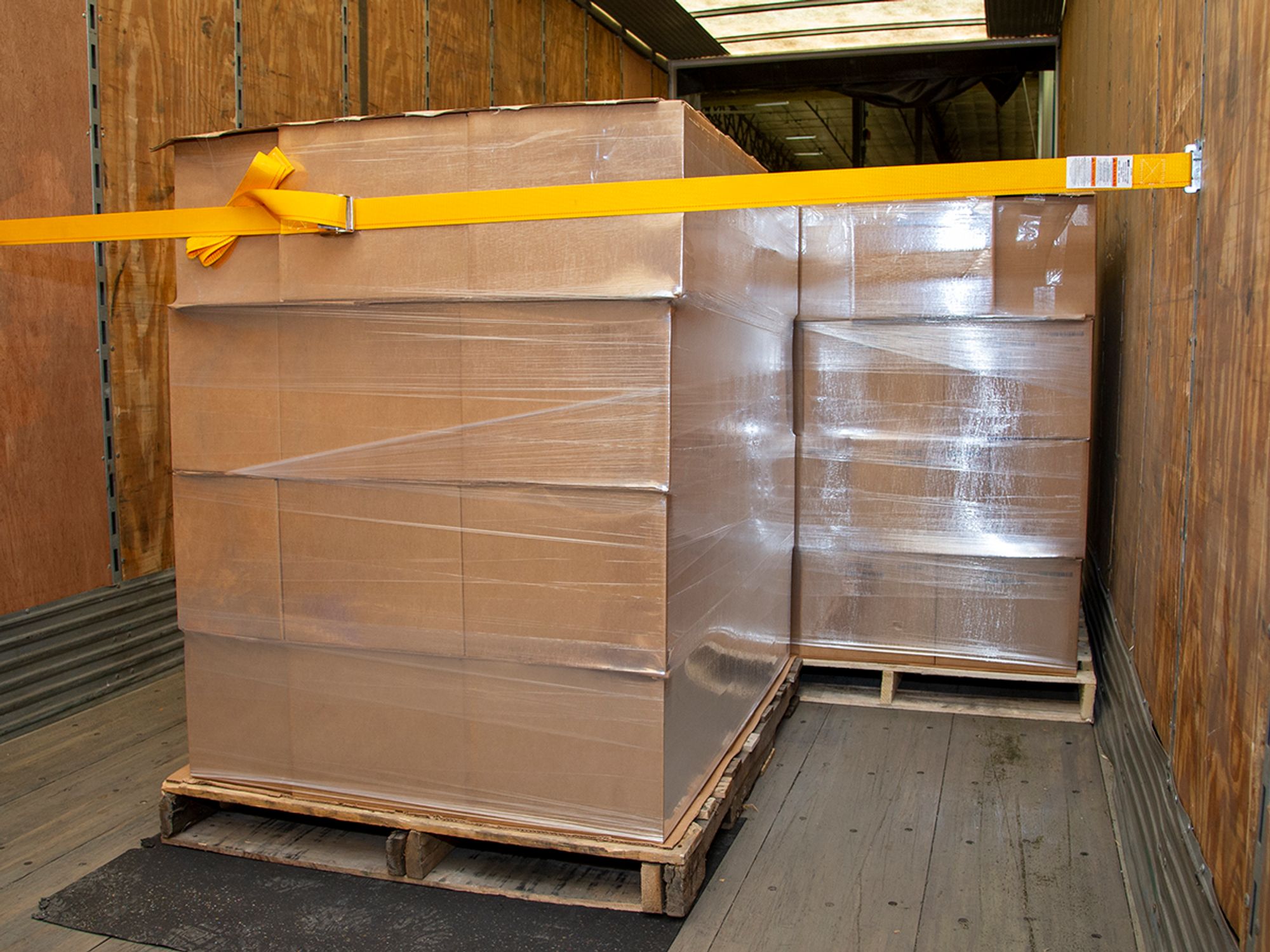Frequently asked questions about cargo securement

- Cargo and equipment must be secured regardless of vehicle type.
- Bungee cords and tarp straps are not suitable for use as tiedowns.
- Tarps are not specifically required under federal rules.
Q: Do I have to secure cargo in my dry van?
A: Yes, all cargo and equipment must be secured against movement, regardless of vehicle type. However, according to 49 CFR 393.102(c), cargo is considered to be secured if it is transported in a sided vehicle that has “walls of adequate strength” and each article of cargo within the vehicle is in contact with, or close enough to a wall or other articles, so that it cannot shift or tip to the extent that the vehicle’s stability or maneuverability is adversely affected.
Q: Do I have to secure my spare tire, spare chains, landing gear crank, and other vehicle equipment?
A: Yes. The tailgate, tailboard, dunnage, doors, tarps, spare tire, straps, chains, binders, wood blocks, and other equipment used in the vehicle’s operation must be secured.
Q: Does my vehicle have to have a headerboard/bull board/headache rack?
A: No, but if the cargo is in contact with a front-end structure, then that structure must comply with certain specifications. Refer to 393.114.
Q: Can a bungee cord or tarp strap be used as a primary means of securing cargo?
A: Bungee cords and tarp straps are not suitable for use as tiedowns, but they can be used as supplementary restraints for lightweight cargo and equipment.
Q: Are lever-type binders acceptable?
A: Yes. The rules do not specify the types of binders that may be used.
Q: Does coiled wire have to be secured according to the rules for metal coils?
A: In the United States, all coiled, rolled, or wrapped metal objects must be secured according to the rules for metal coils. In Canada, the rules for metal coils apply only to coils of rolled sheet metal.
Q: Are tarps required?
A: They are not specifically required under the federal rules, but they may be necessary to contain certain types of loads, and some states, provinces, and/or the company may require their use.
Q: Can cargo straps go around the outside of the rub rails?
A: Yes, in the United States, but not in Canada. At least as a best practice, all straps should be routed in-board of the rub rails whenever possible.
